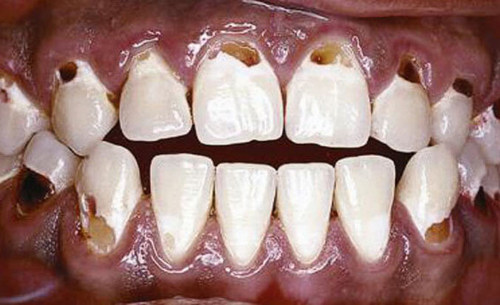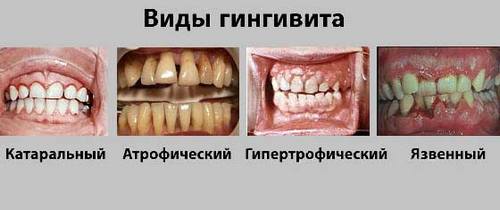Bad breath noticeable to others, but the one who smells, he usually feels. If you sensed a problem, carefully inspect the child’s mouth and throat – they are under suspicion in the first place! Inhabiting micro-organisms in the course of their life form volatile sulfur compounds, including hydrogen sulfide, which smells not of roses. Why is this happening?
Stomatitis
Characteristic redness and whitish ulcers on the oral mucosa are often sources of bad odor. They can appear after a cold or treatment with antibiotics, which destroyed the local flora, with the exception of fungi that these drugs do not act.
You need to lubricate the mucous membranes of the mouth antifungal solution. But the cause of stomatitis are often bacteria -and then again without antibiotics not to manage.
Council. Do not self-medicate, not to make things worse. Provide to understand all the dentist.
Dry mucosa
Dry mouth usually occurs on the background of school stress, and if the child is dressed too warm, he has a fever or he is taking medications – especially diuretics and antihistamines, which dry mucous membranes, reducing the production of saliva. But it has antibacterial properties, thus holding back the onslaught of bacteria.
Council. Make sure that the child gets enough fluids – at least 2 liters a day. And when he’s ill, suffering diarrhea, meds, hot days, let him drink more!
Sports problem
In physical education classes or with a serious physical activity, people breathe quickened, drawing air through the mouth. Saliva (a natural disinfectant) quickly evaporates, and the bacteria multiply intensively, producing volatile substances with an unpleasant odor.

Council. To solve the problem, you need to rinse your mouth or use chewing gum without sugar. And most importantly – during training the child needs all the time to drink a little (after all, he sweats, losing fluid, but dehydration also leads to drying of mucous membranes). Only water should be without sugar and without gas!
Bacterial plaque on the cheeks, gums and tongue
It is here and not on the teeth, as is commonly thought, live 80% of the bacteria living in the mouth and cause odor. Remind your student not to forget to clean these problem areas morning and evening! This can be done with a soft toothbrush or special devices. From the back of the heads of some of the brushes provided cleaning pads for the cheeks and tongue, and in addition, to handle the release of a special device in the form of a petal.
Plaque on the teeth indicates a lack of care. This is probably the most common cause of bad breath in children! Rare child spends with a brush in the hands of the 3 minutes required for this procedure. Turn on some cheerful song this time and make sure that the son or daughter was brushing my teeth until the end of the melody, periodically changing motion – circular, scrubbing, sweeping.
Council. Explain to your child that guide the brush should spread from the gums to the teeth, and not Vice versa! Otherwise, you can get an infection in the place where the tooth connects to the gum (periodontal pocket). As its development breath only intensified.
Dark spots on enamel
They talk about developing caries. By itself, it will not work – have to go to the dentist! Russia was faced with an epidemic of dental caries in children. It is found in 87% of first graders, and with the change of teeth the situation is not improving – in fact, half of all schoolchildren in the place of the patient milk cut the permanent tooth has already been affected by caries. Where do we get fresh breath?
As a rule, the root of all these troubles – the lack of dental hygiene. It requires a whole system of integrated care, including brush and paste, mouthwash and dental floss. Together they remove food particles and plaque from places where no paste (due to its viscous consistency), no toothbrush is simply unable to penetrate.
But dissolved in the rinse substances easily find their way into all those secret nooks and crannies, washing away bacteria. As a result, the quality of cleaning is improved twice, and the breath becomes fresh. In Swedish schools, for example, students are forced to use the mouthwash in 1965 – after it was experimentally found that this measure reduces the appearance of caries and protects against bad breath.
It is important
Dental floss can be simple – a silk or nylon and impregnated with extra menthol to enhance deodorizing properties. Only thanks to them you can completely remove food debris and plaque from the side surfaces of the teeth, which does not penetrate brush and where it all begins to decompose, emitting a corresponding odor. Thread need to wind around index fingers, pull and stretch between the teeth of the pendulum movements.
Council. Since conditioners are meant for schoolchildren older than 12 years, and the special children we have not yet produced, use a solution of baking soda (a teaspoon per Cup), green tea, and infusions of chamomile and sage. Let the child use them twice a day after brushing your teeth.
Inflammation of gums – periodontitis
The disease begins with the surface process of gingivitis. Its symptoms – itchy, plaque, periodically swelling and bleeding gums plus bad breath – secured child, if it two days in a row forgot to brush my teeth. However, after a thorough cleaning everything passes, but the gums can become inflamed again, especially with a hereditary predisposition, against malocclusion or when you have braces.
Council. Encourage your child to brush dental – threaded floss – tightly standing teeth twice a day, and loosely – at least 3-4 times a week.
Brew infusion of Hypericum perforatum (2 tablespoons per Cup of boiling water, to insist hour in a thermos). It strengthens the gums, neutralizing the odor. Child under 12 years is enough to make 1/4 Cup, and those who are over the age of 12 – 1/3 Cup of broth 3 times a day before meals.
Encourage your child to drink unsweetened green tea, and the remaining after brewing grounds it is useful to brush your teeth. Tea leaf freshens breath not only due to its deodorizing effect, but also due to the strong bactericidal effect and the presence of fluorine.



